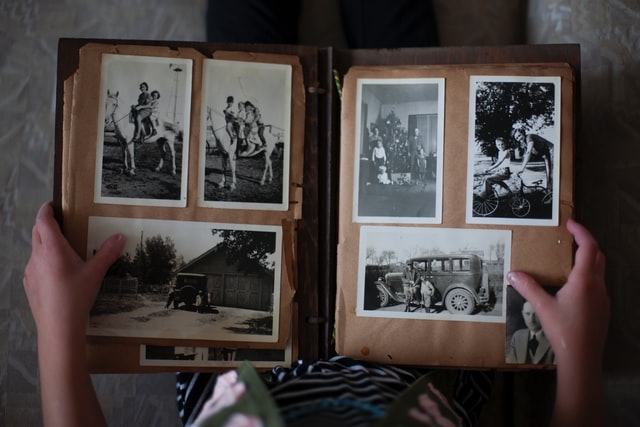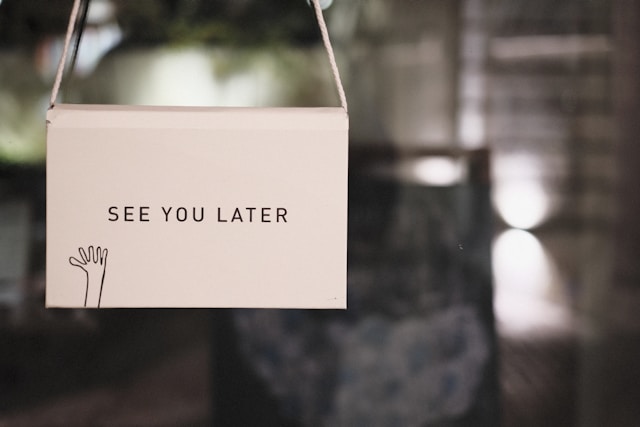Written by: Olivera Tolimir
Nowadays, we often hear advice to live in the present moment. “Past is in the past, so forget about it!” Respectfully, we beg to differ.
Knowing your past is significant since it’s the only way to learn from your mistakes and never forget your true self! And there’s no way to remember who you are if you don’t contemplate your past from time to time.
Did we get too philosophical? Ok, no one expects you to think about your whole life in Serbian (yet). Let’s start with learning to say what you ate today!
We’ve already written about how to learn Serbian present and future tense. If you’ve missed it, quickly check out those two blog posts. We’ll wait for you.
Done? Perfect! Let’s dive in!

The Best Way to Learn Serbian Past Tense
Similar to the future tense in Serbian, we use two different verbs to make the past tense (in Serbian: perfekat): the auxiliary and the main verb. So, let’s see what you need to know to master our past tense:
- gender of the person you’re talking about;
- present tense of the verb to be (jesam);
- a special form of the main verb called radni glagolski pridev, but will refer to it as RGP (it’s shorter).
Present Tense of the Auxiliary Verb JESAM
Serbian past tense consists of the auxiliary verb jesam (to be) and RGP. The conjugation of the verb jesam looks like this:
Singular
- jesam (I am)
- jesi (you are)
- jeste (he/she/it is)
Plural
- jesmo (we are)
- jeste (you are)
- jesu (they are).
This is the full form of the verb to be. Now we need to make the auxiliary verb shorter to form the past tense. We remove the first two letters (je-). The only exception is 3rd person Sg, where we remove the last three letters (-ste). So, the short forms look like this:
Singular
- ja sam (I am)
- ti si (you are)
- on/ona/ono je (he/she/it is)
Plural
- mi smo (we are)
- vi ste (you are)
- oni/one/ona su (they are).
We did a similar thing when making the future tense. Do you remember what it was? You can recall it here!
RGP of the Main Verb
RGP is a form of the verb we use to make a few other tenses. It’s a participle.
There’s one thing you should remember about the RGP. It doesn’t care who we’re talking about (you, me, or those people across the street). Only two things concern it:
- the number of subjects (singular or plural)
- the gender of subjects (masculine, feminine, or neuter).
So, how do we form this verb form? First, we’ll need the infinitive of the verb we want to use in the past tense. Second, we should remember that Serbian infinitive can end in -ti, -ći, or -sti. Those verbs ending in -ti are the easiest to make other tenses because they’re regular. So, we’ll start with them.

RGP of the Verbs with a -TI Ending in Infinitive
When we want to make RGP from the -ti verbs, we need to remove their -ti ending and replace it with the endings of the RGP. Those endings are:
Singular
- -o (masculine gender)
- -la (feminine gender)
- -lo (neuter gender)
Plural
- -li (masculine gender)
- -le (feminine gender)
- -la (neuter gender).
For example, let’s look at the verbs razgovarati (to talk), misliti (to think), and dremati (to nap). First, we remove their -ti endings:
- razgovara-
- misli-
- drema-.
Now, we add the RGP endings according to the subject of a sentence. If we talk about Ana (a girl), we’ll use the ending –la, because:
a) Ana is female;
b) Ana is only one person, so we need the singular ending.
So, the RGP forms of the listed verbs will be:
- razgovarala;
- mislila;
- dremala.
If we talk about Darko and Marko (two boys), we’ll use the ending –li, because:
a) Darko and Marko are males;
b) Darko and Marko are two people, so we need plural.
So, the RGP forms of the listed verbs for Darko and Marko will be:
- razgovarali;
- mislili;
- dremali.
We hope this is clear because now we’ll put together the auxiliary and the main verb and finally learn Serbian past tense! We’ll explain it using the verb misliti (to think).
Take a look at the table:
I (a male): Ja sam mislio.
You (a male): Ti si mislio.
He: On je mislio.
I (a female): Ja sam mislila.
You (a female): Ti si mislila.
She: Ona je mislila.
It: Ono je mislilo.
We (males or males + females): Mi smo mislili.
You (males or males + females): Vi ste mislili.
They (males or males + females): Oni su mislili.
We (females): Mi smo mislile.
You (females): Vi ste mislile.
They (females): One su mislile.
They (neuter gender): Ona su mislila.

First, let’s explain why we don’t have the I and you forms for the neuter gender. That’s because the neuter gender doesn’t exist in nature, so it’s reserved for objects and youngsters (children and baby animals). But while we can refer to a child as it (Dete je palo. – The child fell.), we’ll never speak directly to a child and use the neuter gender.
So, the form of the auxiliary verb depends on the person (I am – ja sam; you are – ti si, etc.), and the RGP form depends on the number of subjects and their gender (Ivan je mislio.).
RGP of the Verbs with -STI and -ĆI Endings in Infinitive
The verbs ending in -sti and -ći have irregular RGPs, and the easiest way (for now) is to memorize them the way they are and try to group them. For example:
- certain “walking” verbs have š in their RGPs: ići (to go/to walk), poći (to start going), doći (to get to the destination): išao, pošao, došao
- some verbs have k in their RGPs: peći (to bake), seći (to cut), reći (to say): pekao, sekao, rekao
- some verbs have g in their RGPs: moći (can, be able to), stići (arrive): mogao, stigao.
All these verbs have something in common. Their masculine singular forms end in –ao, not in –o.
There are a lot more irregular forms, such as jeo from the verb jesti (to eat), pao (pasti – to fall), rastao (rasti – to grow), and so on. You will learn this in our A1.2 course! If you haven’t started learning Serbian yet, first check out our A1.1 course.



